Indoor plants have increasingly become a popular and integral part of modern home décor, providing numerous physical, psychological, and aesthetic benefits. According to a study conducted by NASA, indoor plants can effectively remove harmful pollutants from the air and improve overall air quality, contributing to healthier living spaces.
Furthermore, research published in the Journal of Physiological Anthropology suggests that interacting with indoor plants can reduce stress and improve mood. However, selecting your first indoor plant can be a daunting task, given the vast array of species and their diverse care requirements.
In this comprehensive guide, we will explore various factors to consider when choosing your first indoor plant, including light requirements, humidity preferences, space constraints, and toxicity concerns. We will also delve into recommendations for low-light, small-space, low-maintenance, and pet-friendly plants, ensuring you make an informed decision and embark on your journey to creating a vibrant and thriving indoor oasis.
Why is choosing the right indoor plant crucial for beginners?
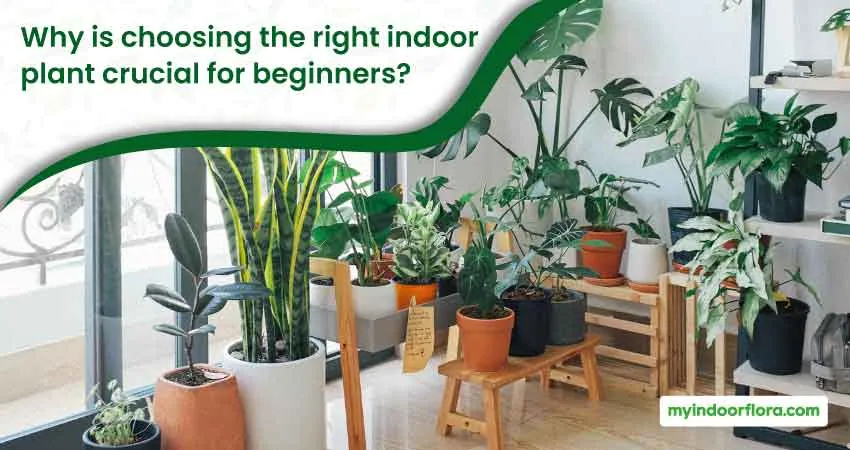
Selecting the ideal indoor plant is essential for beginners, as it sets the foundation for a successful plant care journey. In this section, we’ll explore the importance of matching plants with your environment and lifestyle, personal preferences, and setting realistic expectations for plant care and maintenance.
Importance of matching plants with your environment and lifestyle
Different plants thrive in varying conditions, and choosing a plant that is well-suited to your home’s environment is key to its survival. Factors such as light, temperature, humidity, and available space can greatly impact a plant’s growth and health.
Moreover, your lifestyle plays a significant role in plant selection. If you have a busy schedule, opting for low-maintenance plants can save you time and effort. On the other hand, if you enjoy the process of nurturing and tending to your plants, you might prefer species that require more attention.
The role of personal preferences in plant selection
Personal preferences also come into play when choosing your first indoor plant. Some people might gravitate towards lush, leafy plants, while others may be drawn to the sculptural beauty of succulents or the delicate charm of flowering plants. By aligning your plant choice with your personal aesthetic, you’ll be more likely to enjoy and care for your new green companion.
Setting realistic expectations for plant care and maintenance
It’s essential to set realistic expectations for plant care and maintenance, as it can be disheartening to see your plant struggle or fail to thrive. By researching and selecting a plant that matches your level of commitment and expertise, you can avoid potential disappointment and enjoy a fulfilling plant care experience.
Key factors to consider when selecting your first indoor plant
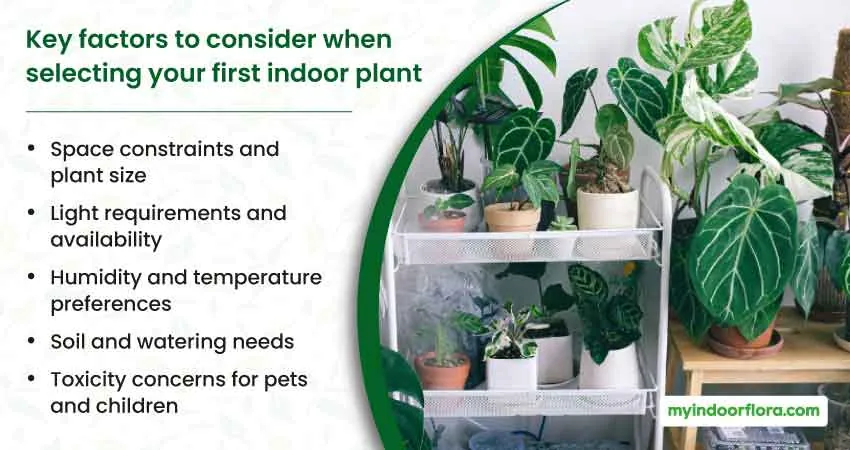
In this section, we’ll delve into the various factors you should consider when choosing your first indoor plant, including space constraints, light requirements, humidity and temperature preferences, soil, and watering needs, and toxicity concerns.
Space constraints and plant size
Before you select a plant, evaluate the space you have available in your home. Consider the plant’s mature size, as some can grow quite large and may not be suitable for small spaces. Measure the area where you plan to place the plant and ensure there is enough room for it to grow.
| Plant Type | Space Required |
|---|---|
| Small plants (e.g., succulents, air plants) | Minimal space, suitable for shelves, windowsills, or tabletops |
| Medium-sized plants (e.g., pothos, peace lily) | Moderate space, ideal for corners or larger surfaces |
| Large plants (e.g., fiddle leaf fig, monstera) | Ample space, perfect for open areas or as statement pieces |
Light requirements and availability
Light is a crucial factor in plant growth, and different plants have varying light requirements. Assess the light availability in your home by observing the direction and duration of sunlight throughout the day. Here are some general guidelines to help you determine the light conditions in your space:
| Light Condition | Description |
|---|---|
| Low light | North-facing windows, indirect or filtered light |
| Medium light | East or west-facing windows, partial direct |
| Medium light | East or west-facing windows, partial direct sunlight |
| Bright light | South-facing windows, strong direct sunlight |
Once you’ve identified the light conditions in your space, choose a plant that matches these conditions to ensure its health and vitality.
Humidity and temperature preferences
Indoor plants have specific humidity and temperature preferences, which can impact their growth and overall health. Generally, tropical plants require higher humidity levels, while desert plants can tolerate lower humidity environments. Evaluate the humidity and temperature in your home and select a plant that will thrive in those conditions.
Soil and watering needs
Proper soil composition and watering routines are crucial for your indoor plant’s health. Different plants have unique soil and watering requirements, and it’s essential to understand these needs before making a selection. For example, succulents and cacti prefer well-draining soil and infrequent watering, while ferns and calatheas may require consistently moist soil.
Toxicity concerns for pets and children
When choosing your first indoor plant, consider its toxicity, especially if you have pets or children. Some plants can be toxic when ingested, causing illness or, in severe cases, death. Research the plant species you’re considering and select a non-toxic option to ensure the safety of your household.
Which indoor plants are best suited for low light conditions?
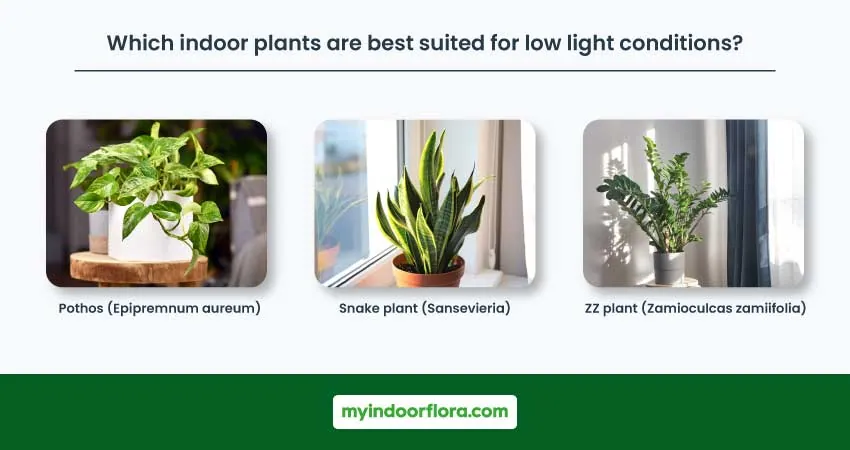
If your home receives minimal natural light, don’t fret! There are several indoor plants that can thrive in low light conditions. In this section, we’ll explore some popular low-light plants, such as pothos, snake plant, and ZZ plant.
Pothos (Epipremnum aureum)
Pothos, also known as devil’s ivy, is a low-light-loving plant with heart-shaped leaves that can vary in color and pattern. This trailing plant is easy to care for, making it a great option for beginners. Pothos can be grown in hanging baskets or allowed to climb on a support structure.
Snake plant (Sansevieria)
Snake plants are hardy, low-maintenance plants with tall, sword-like leaves that can tolerate low light conditions. These plants are known for their air-purifying abilities and can help remove toxins from your home’s air. Snake plants come in various shapes, sizes, and colors, providing plenty of options for your indoor space.
ZZ plant (Zamioculcas zamiifolia)
ZZ plants are popular low-light plants with glossy, dark green leaves that can tolerate a wide range of conditions. These plants are slow-growing and require minimal care, making them an excellent choice for busy individuals or those new to plant care.
Which indoor plants are ideal for small spaces?
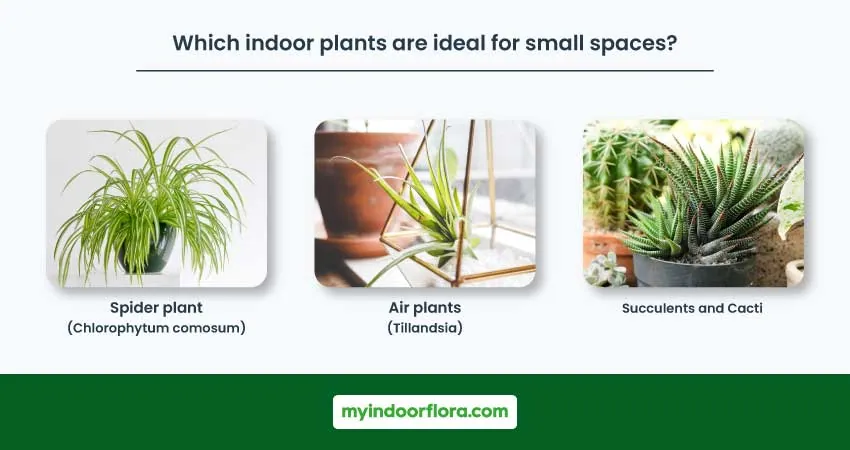
For those with limited space, several indoor plants can thrive without taking up too much room. In this section, we’ll discuss popular small-space plants, such as spider plants, air plants, and succulents.
Spider plant (Chlorophytum comosum)
Spider plants are adaptable, low-maintenance plants with arching, variegated leaves that can grow in small pots or hanging baskets. These plants are known for their air-purifying properties and can produce baby plants, or “spiderettes,” which can be easily propagated for more greenery.
Air plants (Tillandsia)
Air plants are unique, small-sized plants that don’t require soil to grow. They absorb moisture and nutrients from the air and can be displayed in various creative ways, such as mounted on driftwood, placed in glass terrariums, or suspended in wire holders. These plants are perfect for small spaces and require minimal care, making them an excellent choice for beginners.
Succulents and cacti
Succulents and cacti are popular choices for small spaces due to their compact size and striking appearance. These plants require minimal watering and can thrive in various containers, such as small pots, terrariums, or even repurposed objects. With their diverse shapes, colors, and textures, succulents and cacti can add visual interest to any small space.
How can you accommodate plants with high humidity needs in a dry environment?
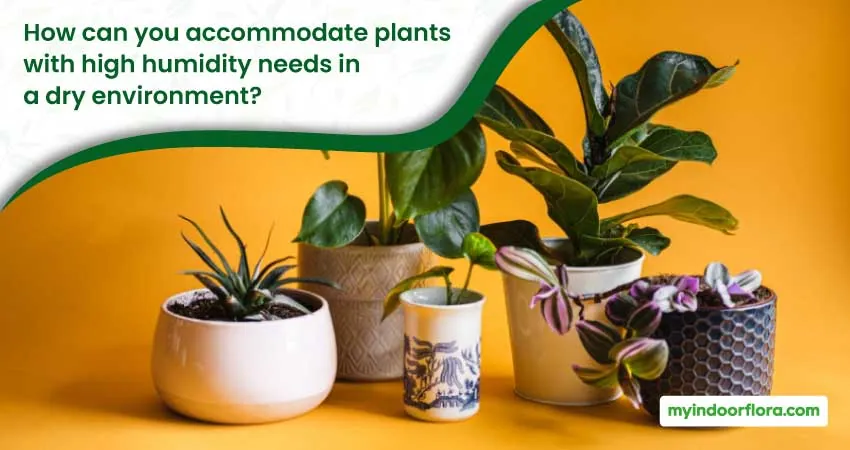
Creating a suitable environment for humidity-loving plants in a dry home can be challenging, but there are several methods to increase humidity levels. In this section, we’ll explore the use of humidifiers, pebble trays, and grouping plants to accommodate high-humidity plants.
Use of humidifiers and pebble trays
Humidifiers can help increase humidity levels in your home, providing a better environment for humidity-loving plants. Place a humidifier near your plants, but avoid directing the mist directly onto them to prevent potential issues, such as mold or mildew.
Pebble trays are another method to increase humidity around your plants. Fill a tray with pebbles or gravel and add water, ensuring the water level remains below the top of the pebbles. Place your potted plant on top of the pebbles, and the water will evaporate, increasing the humidity around the plant.
Grouping plants to increase humidity
Grouping plants together can create a microclimate with higher humidity levels. As plants release moisture through a process called transpiration, the surrounding air becomes more humid. By placing multiple plants in close proximity, you can create a more favorable environment for humidity-loving species.
Selecting plants with similar humidity requirements
When choosing plants for your home, consider selecting species with similar humidity requirements. This approach will make it easier to maintain consistent humidity levels and ensure that all your plants thrive.
What are the most low-maintenance indoor plants for busy individuals?
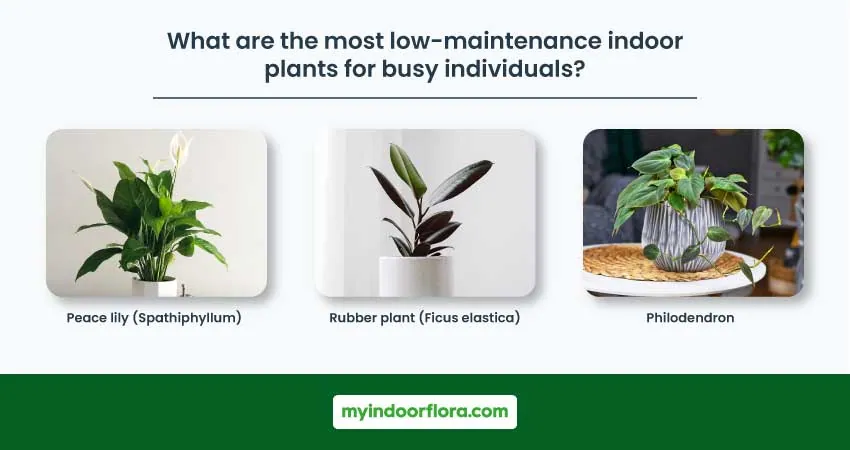
If you have a hectic schedule or prefer low-maintenance plants, there are several options that require minimal care. In this section, we’ll explore some of the easiest indoor plants to care for, such as peace lilies, rubber plants, and philodendrons.
Peace lily (Spathiphyllum)
Peace lilies are low-maintenance plants with lush, dark green leaves and elegant white flowers. They can tolerate low light conditions and require watering only when the soil is dry to the touch. Peace lilies are also known for their air-purifying properties, making them a practical and attractive addition to your home.
Rubber plant (Ficus elastica)
Rubber plants are hardy, low-maintenance plants with large, glossy leaves that can tolerate a range of light conditions. These plants prefer well-draining soil and require watering only when the top inch of soil is dry. Rubber plants can grow quite tall, making them ideal for filling empty corners or adding height to your indoor space.
Philodendron
Philodendrons are a diverse group of plants that are generally easy to care for, making them popular choices for busy individuals or beginners. These plants come in various shapes and sizes, including trailing varieties like the heartleaf philodendron and upright types like the selloum. Philodendrons can tolerate low to medium light conditions and require watering when the top layer of soil is dry.
How do you ensure the safety of pets and children when choosing indoor plants?
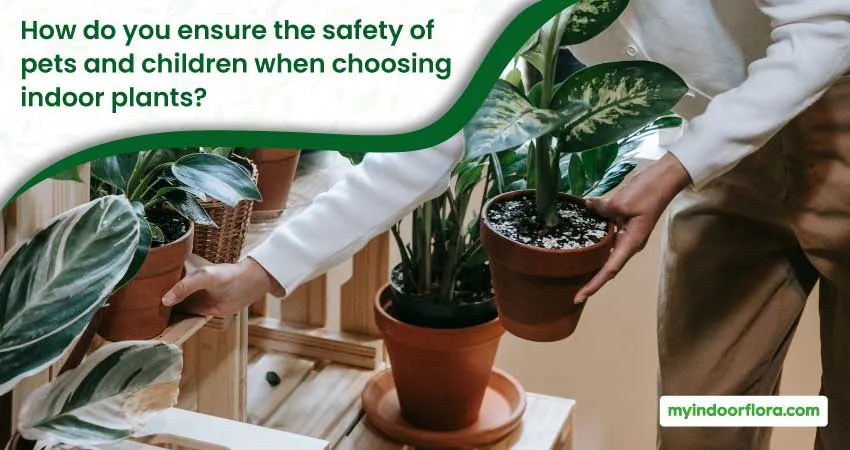
Keeping your pets and children safe while enjoying indoor plants is a priority for many households. In this section, we’ll discuss identifying common toxic plants to avoid, safe plant alternatives, and tips for creating a pet-friendly and child-safe indoor garden.
Common toxic indoor plants
Before selecting a plant, it’s essential to research its toxicity to ensure it won’t pose a threat to your pets or children. Some common toxic indoor plants include:
- Dieffenbachia (dumb cane)
- Alocasia (elephant ear)
- Sago palm (Cycas revoluta)
- Caladium
- Monstera deliciosa (Swiss cheese plant)
Safe plant alternatives for pets and children
There are numerous non-toxic indoor plants that are safe for pets and children. Here are a few examples of pet-friendly and child-safe plants:
- Spider plant (Chlorophytum comosum)
- Boston fern (Nephrolepis exaltata)
- Areca palm (Dypsis lutescens)
- Maranta (prayer plant)
- Haworthia
Tips for creating a pet-friendly and child-safe indoor garden
When designing your indoor garden, consider the following tips to ensure the safety of your pets and children:
- Choose non-toxic plants: As mentioned earlier, prioritize non-toxic plants for your indoor garden to minimize the risk of poisoning.
- Elevate plants: Place plants on high shelves, hanging planters, or other elevated surfaces to keep them out of reach of curious pets and children.
- Secure larger plants: For larger plants, use plant stands or anchor them to the wall to prevent them from being knocked over by pets or children.
- Supervise interactions: Always supervise your pets and children around indoor plants and teach them to respect the plants and avoid touching or ingesting them.
Embrace the world of indoor plants with confidence
Choosing your first indoor plant can be an exciting and rewarding experience. With the practical advice and actionable tips provided in this comprehensive guide, you can confidently select a plant that suits your environment, lifestyle, and personal preferences. As you embark on your plant care journey, remember that patience and observation are key to nurturing a thriving indoor garden. Embrace the joys and benefits of indoor plants and transform your living space into a beautiful, green oasis.
